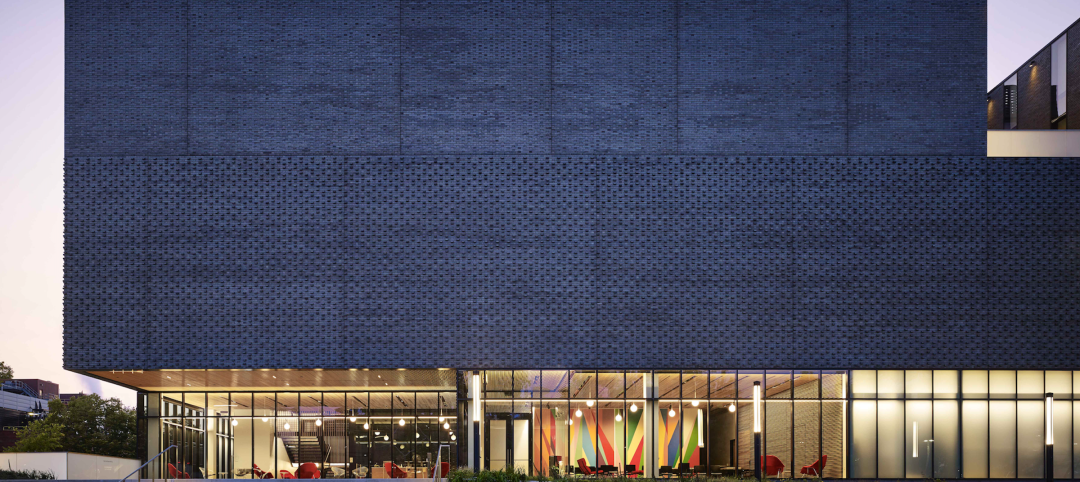An upturn in home-buying and commercial development is a boon for the construction industry, but the pressure to grow can squeeze construction companies grappling with cash flow, expenses and expansion.
— In April, privately-owned housing starts jumped 12.4%, to an annualized rate of 1.319 million units, according to the U.S. Census Bureau and U.S. Dept. of Housing and Urban Development.1
— Cost and availability of labor and developed lots, as well as building material prices, are the top problems builders expect to face this year, according to a recent survey of builders from the NAHB/Wells Fargo Housing Market Index.2
— Construction companies anticipate 5% growth in 2018, up from a strong 4% in 2017, according to a consensus forecast from Oldcastle Business Intelligence.3
You might think it takes a truckload of cash on hand to take advantage of growth in the sector, but here’s how seasoned operators meet the new demand for homes, offices and new locations without drowning in new expenses.

Lining Up New Suppliers in New Areas of Operations
Many construction firms are taking on out-of-state jobs as opportunities arise in regional rebuilding areas like Houston and California. But starting up in new markets is hard.
“When you go to a different area, you need to be able to establish a new set of vendors and that's very time-consuming,” said Ray, a vice president of operations for a large concrete company.
Financial partners can help firms quickly gain the trust of new vendors, no matter the market.
To quickly scale, out-of-towners have to establish credibility. A trusted third-party can help, say construction decision-makers. In particular, financial partners can help firms quickly gain the trust of new vendors, no matter the market.
When Ray needed a new concrete materials supplier in Texas, for example, he took advantage of the existing relationship he had with his business Credit Card financial representative to negotiate with the supplier he wanted to work with, which allowed him to get the materials he needed quickly and at the best price possible.

Managing the Cash Crunch
As builders take on more projects to meet growing demand, it’s taking longer to complete construction jobs. There’s simply not enough construction workers or sub-contractors to get the job done on normal schedules.
“We'd love to build a home in 90 days but in reality, it's taking 130,” said William, a small home builder that does about $40 million a year in revenue. “We accept that and budget for it. As much as we want to build a home in 90 days, it's just not happening.”
Longer timelines mean builders get paid later. Managing cash flow for extended timelines delays your payments to builders. It can turn into a juggling act, particularly when you’re looking to start a new job while previous projects are winding down.
Using a business Credit Card for purchases or materials generates rewards savings that can help defray additional expenses.
To help manage the cash flow crunch, general contractors say they are increasingly working with financial partners that can build custom solutions for their firms. These partners play a helpful role by fully understanding the company’s business needs and helping to ensure their lines of credit are sufficient to allow them to make needed purchases, as well as providing the flexibility they need to jump on demand for new projects.
“Usually it's getting materials for a new job that’s starting up,” said Hal, a vice president of a mid-size building construction contractor. “We may need to purchase specially-ordered materials that are expensive and end up in a catch-22 because we can’t bill for them, but we need them to prepare for the job.”
Having a dedicated financial partner can help contractors and builders avoid the juggling act by developing custom financial programs and solutions. Also, using a business Credit Card for purchases of materials or other items generates rewards savings that can help defray additional expenses due to project delays.

Cards Instead of Cash on the Job Site
Keeping track of expenditures on the jobsite is key to managing cash flow. That challenge becomes even more acute as builders and developers take on projects outside of their normal territories.
Keeping track of expenditures on the jobsite is key to managing cash flow.
Jake, director of operations at a general contractor for commercial construction projects, said his firm has a good idea of what his sub-contractors are going to buy because they get approval from his firm first. But there are always workers on site who need to make purchases.
“Having clear visibility into what are our superintendents’ unexpected expenditures are is really important for our business,” Jake said.
1U.S. Census: Monthly New Residentail Construction, April 2018
2Eye on Housing: Building Materials Prices and Labor Access Top Challenges for 2018
Related Stories
Laboratories | Nov 8, 2023
Boston’s FORUM building to support cutting-edge life sciences research and development
Global real estate companies Lendlease and Ivanhoé Cambridge recently announced the topping-out of FORUM, a nine-story, 350,000-sf life science building in Boston. Located in Boston Landing, a 15-acre mixed-use community, the $545 million project will achieve operational net zero carbon upon completion in 2024.
Retail Centers | Nov 7, 2023
Omnichannel experiences, mixed-use development among top retail design trends for 2023-2024
Retailer survival continues to hinge on retail design trends like blending online and in-person shopping and mixing retail with other building types, such as offices and residential.
Giants 400 | Nov 6, 2023
Top 65 Cultural Facility Construction Firms for 2023
Turner Construction, Clark Group, Whiting-Turner, Gilbane, and Holder Construction top BD+C's ranking of the nation's largest cultural facilities sector general contractors and construction management (CM) firms for 2023, as reported in the 2023 Giants 400 Report. Note: This ranking includes revenue from all cultural building sectors, including concert venues, art galleries, museums, performing arts centers, and public libraries.
Giants 400 | Nov 6, 2023
Top 100 Government Building Construction Firms for 2023
Hensel Phelps, Turner Construction, Clark Group, Fluor, and BL Harbert top BD+C's rankings of the nation's largest government building sector general contractors and construction management (CM) firms for 2023, as reported in the 2023 Giants 400 Report. Note: This ranking includes revenue from all government building sectors, including federal, state, local, military, and Veterans Affairs (VA) buildings.
Healthcare Facilities | Nov 3, 2023
The University of Chicago Medicine is building its city’s first freestanding cancer center with inpatient and outpatient services
The University of Chicago Medicine (UChicago Medicine) is building Chicago’s first freestanding cancer center with inpatient and outpatient services. Aiming to bridge longstanding health disparities on Chicago’s South Side, the $815 million project will consolidate care and about 200 team members currently spread across at least five buildings. The new facility, which broke ground in September, is expected to open to patients in spring 2027.
Office Buildings | Nov 2, 2023
Amazon’s second headquarters completes its first buildings: a pair of 22-story towers
Amazon has completed construction of the first two buildings of its second headquarters, located in Arlington, Va. The all-electric structures, featuring low carbon concrete and mass timber, help further the company’s commitment to achieving net zero carbon emissions by 2040 and 100% renewable energy consumption by 2030. Designed by ZGF Architects, the two 22-story buildings are on track to become the largest LEED v4 Platinum buildings in the U.S.
Sustainability | Nov 1, 2023
Researchers create building air leakage detection system using a camera in real time
Researchers at the U.S. Department of Energy’s Oak Ridge National Laboratory have developed a system that uses a camera to detect air leakage from buildings in real time.
Adaptive Reuse | Nov 1, 2023
Biden Administration reveals plan to spur more office-to-residential conversions
The Biden Administration recently announced plans to encourage more office buildings to be converted to residential use. The plan includes using federal money to lend to developers for conversion projects and selling government property that is suitable for conversions.
Sustainability | Nov 1, 2023
Tool identifies financial incentives for decarbonizing heavy industry, transportation projects
Rocky Mountain Institute (RMI) has released a tool to identify financial incentives to help developers, industrial companies, and investors find financial incentives for heavy industry and transport projects.
Contractors | Nov 1, 2023
Nonresidential construction spending increases for the 16th straight month, in September 2023
National nonresidential construction spending increased 0.3% in September, according to an Associated Builders and Contractors analysis of data published today by the U.S. Census Bureau. On a seasonally adjusted annualized basis, nonresidential spending totaled $1.1 trillion.

















